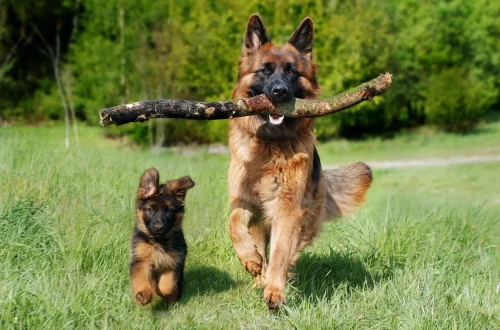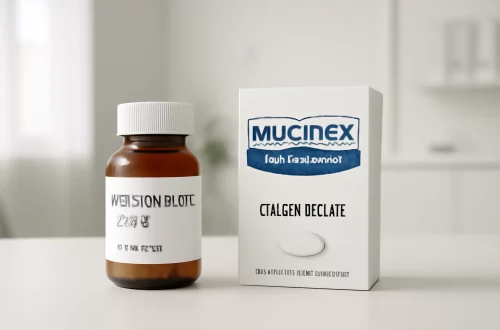
What to Do If Your Dog Has a Broken Tooth
Taking care of a dog involves numerous responsibilities, and one of the most critical aspects is maintaining their dental health. Just like humans, dogs can suffer from dental issues that can significantly impact their overall well-being. One of the more distressing situations pet owners may encounter is when their beloved canine companion experiences a broken tooth. This can occur for various reasons, such as chewing on hard objects, playing rough, or even due to underlying dental diseases.
A broken tooth can lead to pain, infection, and other complications if not addressed promptly. As a pet owner, it’s essential to recognize the signs of dental distress and take the necessary steps to alleviate your dog’s discomfort. Understanding the implications of a broken tooth and knowing how to respond can make a significant difference in your dog’s quality of life.
In the following sections, we will explore the immediate actions you should take if your dog has a broken tooth, how to manage their pain and discomfort, and the importance of professional veterinary care. By being informed and proactive, you can ensure that your furry friend receives the best possible care during this challenging time.
Identifying the Signs of a Broken Tooth
Recognizing when your dog has a broken tooth is crucial for timely intervention. While some fractures may be visible to the naked eye, others can be more subtle and require keen observation. Common signs that your dog may have a broken tooth include changes in eating habits, increased drooling, pawing at the mouth, or reluctance to chew or play with toys. If your dog seems to avoid certain types of food or treats, it may be a sign that they are experiencing discomfort.
Another indicator of a broken tooth is the presence of blood in the saliva or on toys. This can suggest that the fracture has exposed the tooth pulp, leading to bleeding. Additionally, bad breath or an unusual odor emanating from your dog’s mouth may indicate an infection. If you notice any of these signs, it’s essential to assess your dog’s mouth carefully.
Look for visible cracks or chips on the teeth, especially the larger ones at the back of the mouth. However, it’s important to note that some fractures may be hidden beneath the gum line. If you suspect a broken tooth, do not hesitate to contact your veterinarian for a professional evaluation. They can perform a thorough dental examination, possibly including X-rays, to determine the extent of the damage and recommend an appropriate treatment plan.
Immediate Steps to Take After a Tooth Break
If you discover that your dog has a broken tooth, your immediate response can significantly affect their comfort and health. First, assess the situation calmly to avoid causing additional stress to your pet. If your dog is in pain, they may react unpredictably, so approach them gently and speak soothingly.
One of the first steps is to inspect the mouth carefully. If you can safely do so, check for any visible damage, bleeding, or loose teeth. However, avoid forcing your dog’s mouth open if they are resistant, as this could lead to further injury. If you see blood or notice severe swelling, it’s best to limit your dog’s activity to prevent exacerbating the issue.
To manage your dog’s pain until you can get them to the vet, you can provide them with soft food to prevent any further irritation to the broken tooth. Avoid giving them hard treats or toys, as these could worsen the situation. If your dog shows signs of distress, you might consider using a cold compress on the outside of their mouth to help reduce swelling and provide some relief.
While you may be tempted to administer pain relief medications from your own medicine cabinet, it is crucial to avoid this without first consulting your veterinarian. Many human medications can be toxic to dogs, and only a veterinarian can prescribe safe and effective pain relief tailored to your dog’s specific needs.
Finally, make an appointment with your veterinarian as soon as possible. A broken tooth can lead to serious complications, including infections or abscesses, that require prompt medical attention. Your vet will be able to provide a comprehensive treatment plan that may include dental cleaning, extraction, or other necessary procedures.
The Importance of Veterinary Care
When it comes to dental health, professional veterinary care is indispensable. Many pet owners may be tempted to overlook a broken tooth, especially if their dog appears to be coping well. However, dental issues can escalate quickly, and what seems like a minor problem can lead to severe health complications if left untreated.
During a veterinary visit, the veterinarian will conduct a thorough examination of your dog’s oral cavity. This may involve dental X-rays to assess the extent of the fracture and to check for any underlying issues, such as infections or bone damage. Based on their findings, they will recommend an appropriate treatment plan.
In some cases, the veterinarian may suggest a dental extraction, especially if the tooth is severely damaged or poses a risk of infection. In other situations, they may recommend a root canal to save the tooth, depending on its condition. Regardless of the treatment choice, the vet will ensure that your dog is as comfortable as possible throughout the process.
Moreover, regular dental check-ups are essential in preventing future dental issues. Your veterinarian can provide guidance on proper dental hygiene practices at home, such as brushing your dog’s teeth and providing dental chews that promote oral health. Regular check-ups can help catch potential problems early, reducing the likelihood of severe dental issues that could lead to broken teeth in the first place.
Maintaining your dog’s dental health is a critical aspect of their overall well-being. By establishing a routine of regular veterinary visits and practicing good dental hygiene at home, you can help ensure that your dog’s teeth remain strong and healthy for years to come.
Managing Post-Treatment Care
After your dog has received treatment for a broken tooth, it is essential to follow your veterinarian’s aftercare instructions carefully. Depending on the nature of the treatment, your dog may need to take medications for pain or infection, and it’s crucial to administer these as prescribed.
During the recovery period, monitor your dog closely for any signs of complications. Watch for changes in behavior, appetite, or any signs of discomfort. If your dog seems to be in pain or if you notice any unusual swelling or discharge from the mouth, contact your veterinarian immediately for advice.
You may also need to adjust your dog’s diet temporarily to accommodate their healing process. Soft, easy-to-chew foods are often recommended during recovery. Avoid giving your dog hard treats or toys that could irritate the healing area.
Additionally, maintaining a good dental hygiene routine is vital to prevent future dental issues. Brushing your dog’s teeth regularly and providing dental chews can help keep their mouth healthy. You can also ask your veterinarian for recommendations on safe dental products specifically designed for dogs.
Finally, consider scheduling regular dental check-ups with your veterinarian. These visits allow for professional cleaning and monitoring of your dog’s dental health, helping to catch any potential problems early on.
In conclusion, while a broken tooth can be a concerning issue for any dog owner, understanding how to manage the situation effectively can lead to a quicker recovery and better overall health for your pet. Always consult your veterinarian for the best course of action and prioritize your dog’s dental health as part of their routine care.
**Disclaimer:** This article is for informational purposes only and is not intended as medical advice. Always consult with a qualified veterinarian for any health issues concerning your pet.




